Finding Salvation at Slab City
Arts & Culture, Spirituality / / Aug 13, 2018
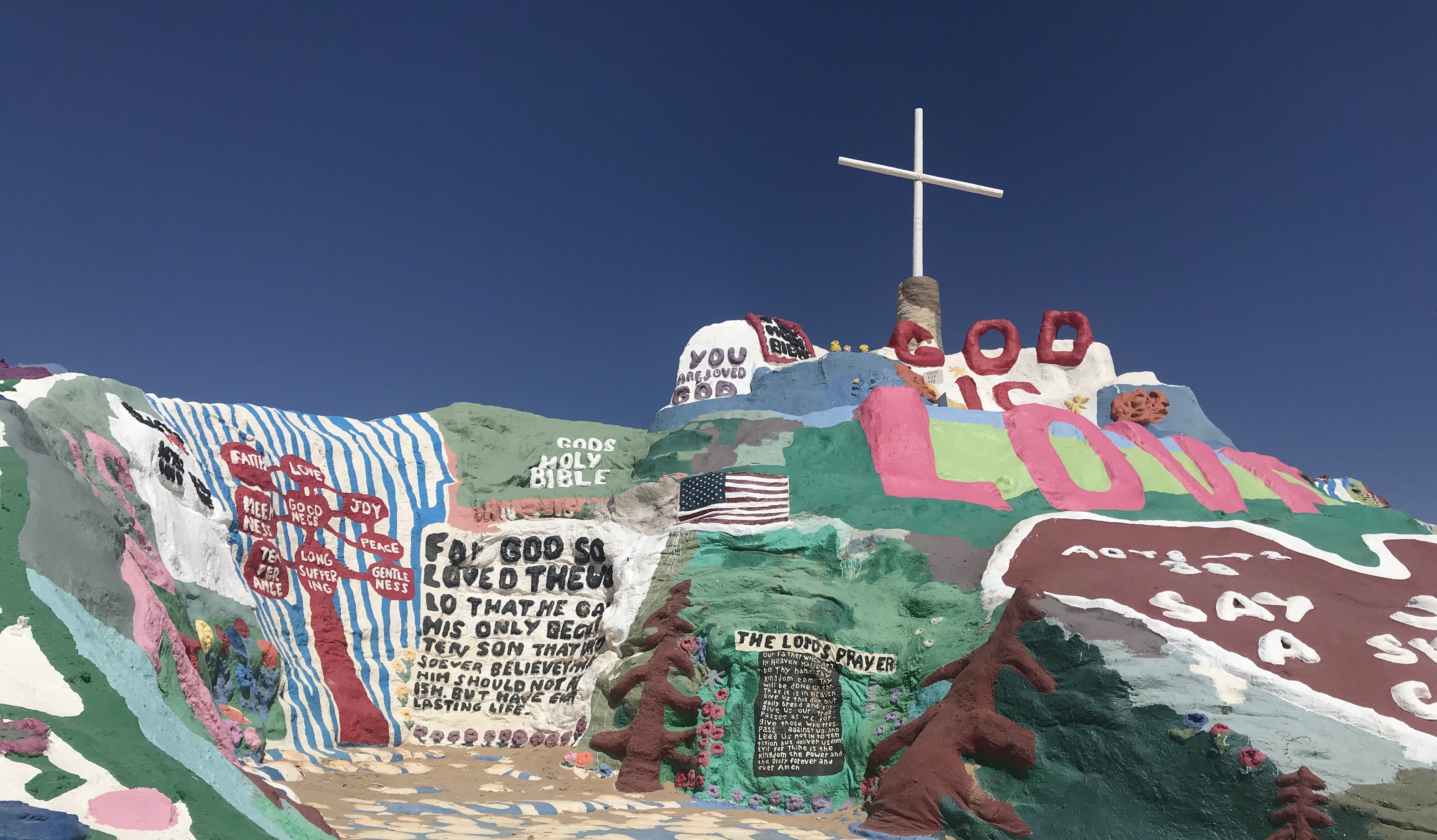
I was a couple months sober the first time that I heard about Salvation Mountain and Slab City, sitting in the driveway of my sober living in pajamas. A young woman spoke to me of this place as if it was her only true home on the planet. It seemed like some apocalyptic fantasy – intriguing, inspiring and frightening. She told us stories of the Salton Sea, a tourist fueled sparkling dream that in its prime brought families from across the country to sunbathe by its shores, yet today sprawls across a barren land. Since its beginning, the Salton Sea has been fed by water from the Colorado River. However, in recent years water transfers down to San Diego county and surrounding areas have left the lake parched, and its shoreline rapidly shrinking. Due to evaporation the Salton Sea now has a higher salt percentage than the ocean, which is killing its wildlife. The dry lake bed, laced with run-off pesticides and heavy metals, now sends toxic dust into the air.
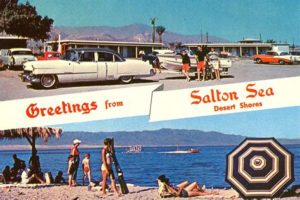
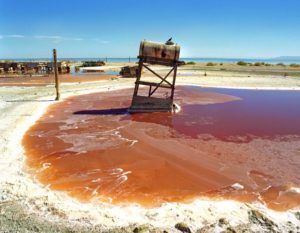
Not far from these contaminated badlands is Slab City, a place known from Vice videos as “The Last Lawless Place on Earth”. Opinions and chatter about this infamous community run rampant, but at its core, Slab City is a commune in the desert for people longing to be away from societal standards and norms. Residents of Slab city set up camp in the middle of the desert bordering the Salton Sea, and under these harsh conditions, built themselves a home, a fellowship, and a livelihood.
One of the more infamous residents of Slab City was Leonard Knight. Knight was born in Vermont in 1931 and raised on a farm. At the age of 20 he was drafted into the United States Army, and at the age of 36 after the passing of his father he had a spiritual awakening. He moved to Slab City, and started construction on his first mountain, a monument to the love he had found through Jesus. Leonard faced a multitude of hardships throughout the creation of his project: poor construction led to the collapse of mountain number one, the city raged war against mountain number two with accusations of high levels of lead in the dirt, and materials were very costly. With a little help from a power greater than himself, and many many donations, Knight prevailed. His mountain was constructed and in 2000, it was declared a National Folk Art Site. Today, a non-profit works to preserve the mountain, and continue Knight’s legacy.

Almost 4 years after I first heard of Salvation Mountain and Slab City, I found myself in the back seat of a friend’s Tahoe with the air-conditioning blasting, driving down the dirt road that leads to the base of the mountain. I couldn’t believe that I was finally HERE. As the mountain loomed ever closer, I physically could not sit still. I had read so much history about this place, watched thousands of videos, read personal accounts, and imagined it in my head for so long. I jumped out of the vehicle as soon as it stopped and ran over to the base of the monument to take it all in.
I’d like to think that my experience at Salvation Mountain was exactly what Leonard Knight had hoped for. I read the paintings that said, “Jesus, I am a sinner. Please come upon my body and into my heart.” Now, I am not a religious person. I live a spiritual lifestyle. I believe that there is something out there underlying the totality of our actions and experiences, a sense of purpose and direction that guides me. I do know that I have made poor choices in life, caused harm and created chaos for those around me. I guess you could say that yes, I am a sinner. Every day I wake up and I welcome a sense of light, love and serenity into my life, and I try each day to be better than the person I was yesterday. The prayer, painted in bold lettering all around the mountain, spoke to me. It was so simple.
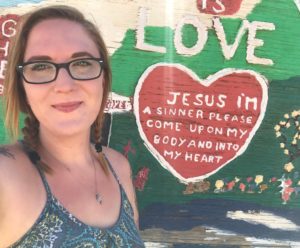
I circled around the Mountain to explore the wonders that Leonard had left behind. To one side of the mountain is a dome shaped cave, made of adobe clay and straw. It was explained to me by a volunteer for the Salvation Mountain non-profit that this installation is called a “Hogan”. The structures were used by the Native Navajo to shield themselves from the unbearable desert heat. I welcomed the oasis. It was upwards of 112 degrees on the day we visited, but in the Hogan it was cool and shaded. The entire inside of the Hogan was decorated with artifacts from Leonard’s life, and his time spent building the mountain.
After exploring the Mountain, we were told that while we were there we should check out the East Jesus Art Installment, only about a mile down the road. We set off on our next adventure. I was blown away by the intricate details and passion that have gone into this desert art installation. What looks from far away to be an actual dump site, turned out to be multiple extravagantly planned and executed pieces of art and sculpture with loud and clear messages.
I am beyond grateful for my experience at Salvation Mountain and the East Jesus Art Installation. I cannot wait to return, because it is simply impossible to take in all the hard work and passion in just one visit. Leonard Knight often said, “Love is universal. Love God, love one another, and just keep it simple.” Thank you, Leonard, for your message.
For more information, and to donate to the preservation of Salvation Mountain visit www.salvationmountain.org
All donations go toward full-time caretakers, protectors of the mountain, and materials to preserve the mountain as the harsh desert climate does take a toll.

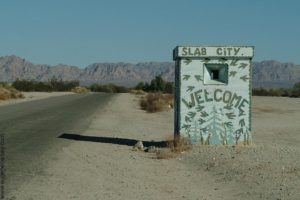

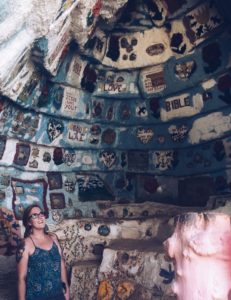
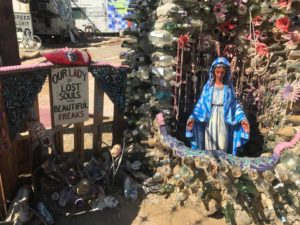
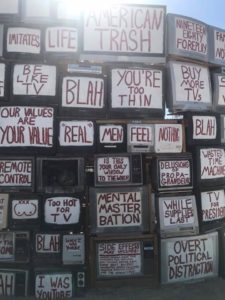
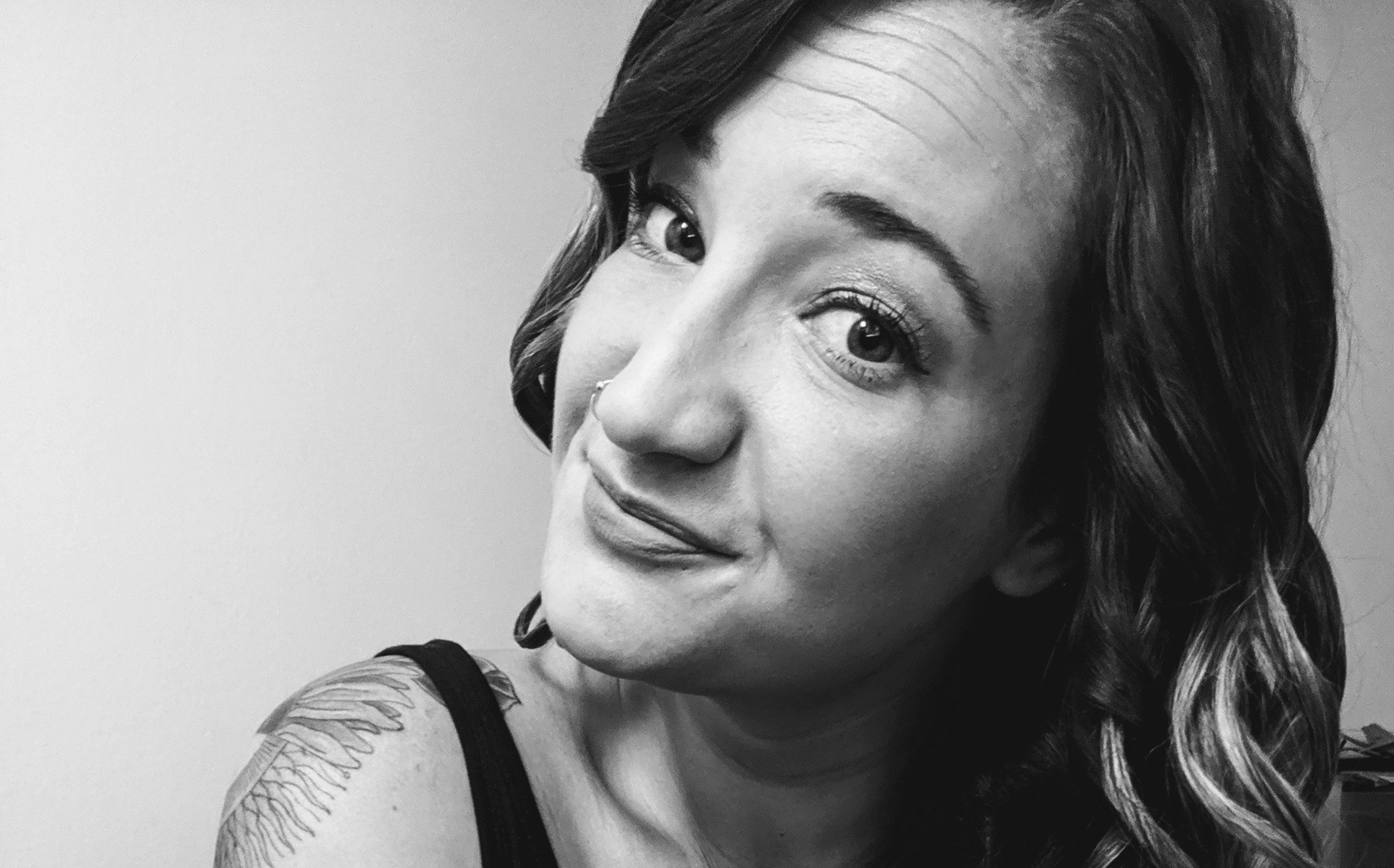


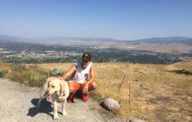
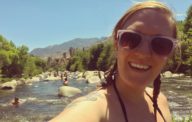
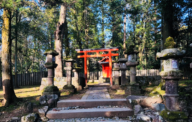

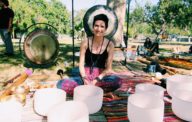
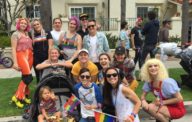

Wonderful!!! and FUN!
Very interesting. Will have to explore this place on my own.
I have to say this is a very well written piece. My visit to Slab City was not under the best of terms, as the evening went from. Ight mare to night terror, but dawn brought us another chance at taking in Salvation Mountain– before the dogs spotted us.